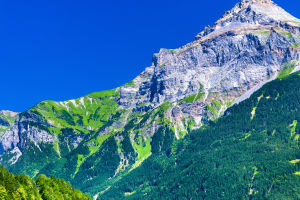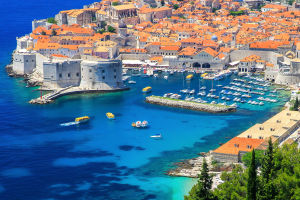Sandstone is a sedimentary rock that is formed when sand grains are deposited on the riverbed due to water erosion and are then accumulated over a long period of time due to the movement of the Earth's crust.
With more than 50% of its composition consisting of quartz, feldspar, and other debris components, sandstone can be used for a variety of applications such as abrasives, raw glass materials, and construction materials.
Compared to other natural stones like marble and granite, sandstone has a more matte appearance that does not produce strong reflected light, giving it a softer and more friendly look.
Additionally, sandstone is an ideal choice for large outdoor stone sculptures due to its coarse grains and strong rate and hardness.
In terms of decorative style, sandstone creates a warm and elegant atmosphere without losing its noble charm. Its durability is comparable to that of marble and granite, and it will not weather or change color over time.
In fact, many buildings that were constructed with sandstone one or two hundred years ago still retain the same style and charm.
One of the most significant advantages of sandstone over other natural stones is its radioactivity. Sandstone has zero radioactivity, making it harmless to the human body and suitable for large-scale applications. In contrast, marble and granite have trace levels of radioactivity, which can cause subtle harm to humans when exposed to them over extended periods.
Another advantage of sandstone is that it is a matte stone that does not produce light pollution caused by reflection. It is also a natural anti-slip material, making it ideal for outdoor applications where slip resistance is necessary.
In contrast, marble and granite are glossy stones that only show their decorative effect in the light and are more likely to cause light pollution.
Despite its advantages, sandstone has some weaknesses that need to be taken into account when using it in construction. For example, sandstone has a low strength and high water absorption rate, making it less weather-resistant than other natural stones.
Therefore, when choosing sandstone panels, safety should be the primary consideration.
Sandstone has a large void ratio in its internal structure, giving it characteristics such as sound absorption, moisture absorption, and fire resistance.
These features make sandstone ideal for decorating public spaces like theaters, gyms, and hotels that require sound absorption capabilities.
In addition to sandstone, there are other types of sedimentary rocks like the Danxia landform, which is composed of huge thick red sandstone and conglomerate.
Danxia landform is one of the rock formations that developed during the Jurassic to Tertiary period, beginning with the Himalayan movement in the late Tertiary period. The red stratum was deformed and uplifted by the basin, leading to erosion by water, gravity, and wind along vertical joints.
The resulting formations include deep ravines, remnant peaks, stone walls, stone pillars, crumbling cones, stone buds, caves, funnels, stalactites, and other geomorphic forms.
The Danxia landform is known for its magnificent scenery and strange peaks, making it a popular tourist destination. In addition to Danxia landform, there are other sandstones in the world, such as Australian sandstone, Indian sandstone, and Spanish sandstone.
Among them, Australian sandstone is the most popular among architects due to its color and pattern.
Australian sandstone is also an eco-friendly stone that has the characteristics of no pollution, no radiation, no reflection, no weathering, no discoloration, heat absorption, heat preservation, and non-slip.
In conclusion, sandstone is a versatile and durable natural stone that has many advantages, making it suitable for various applications.


